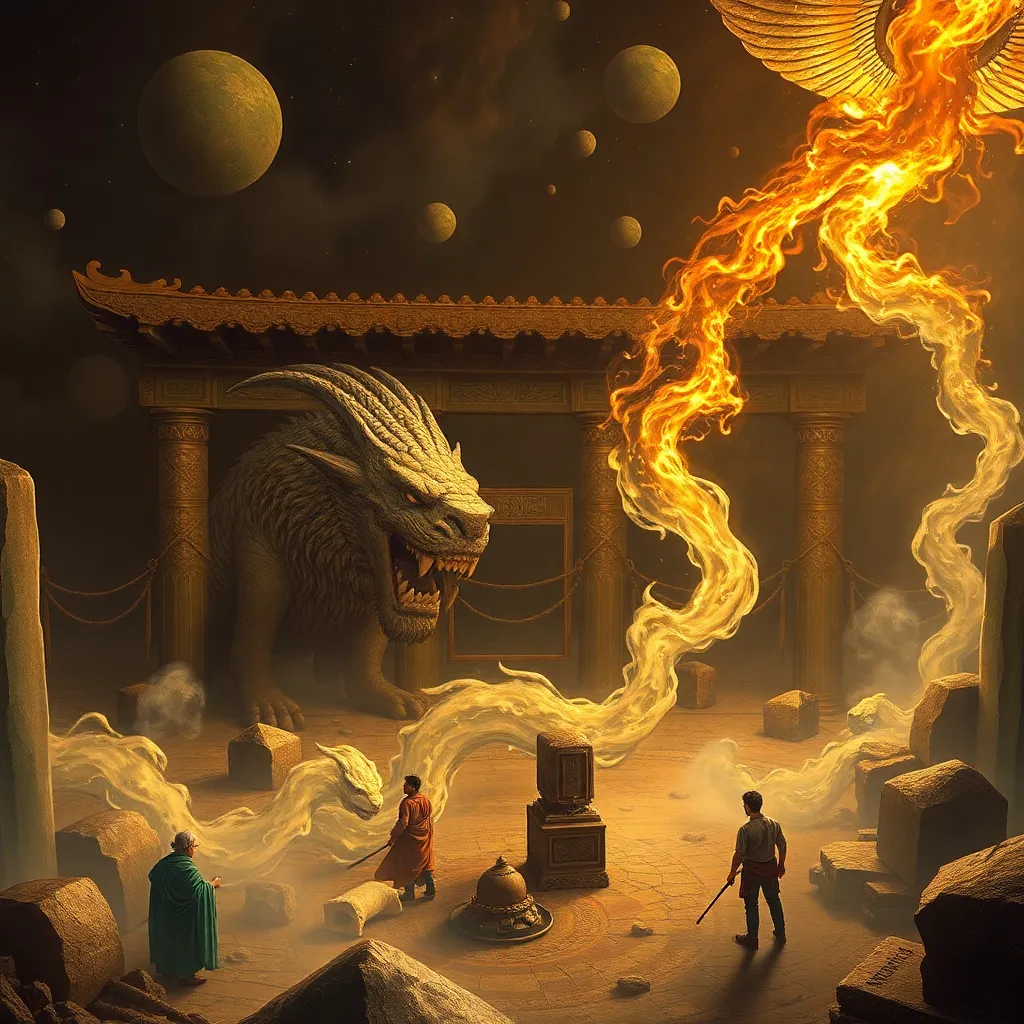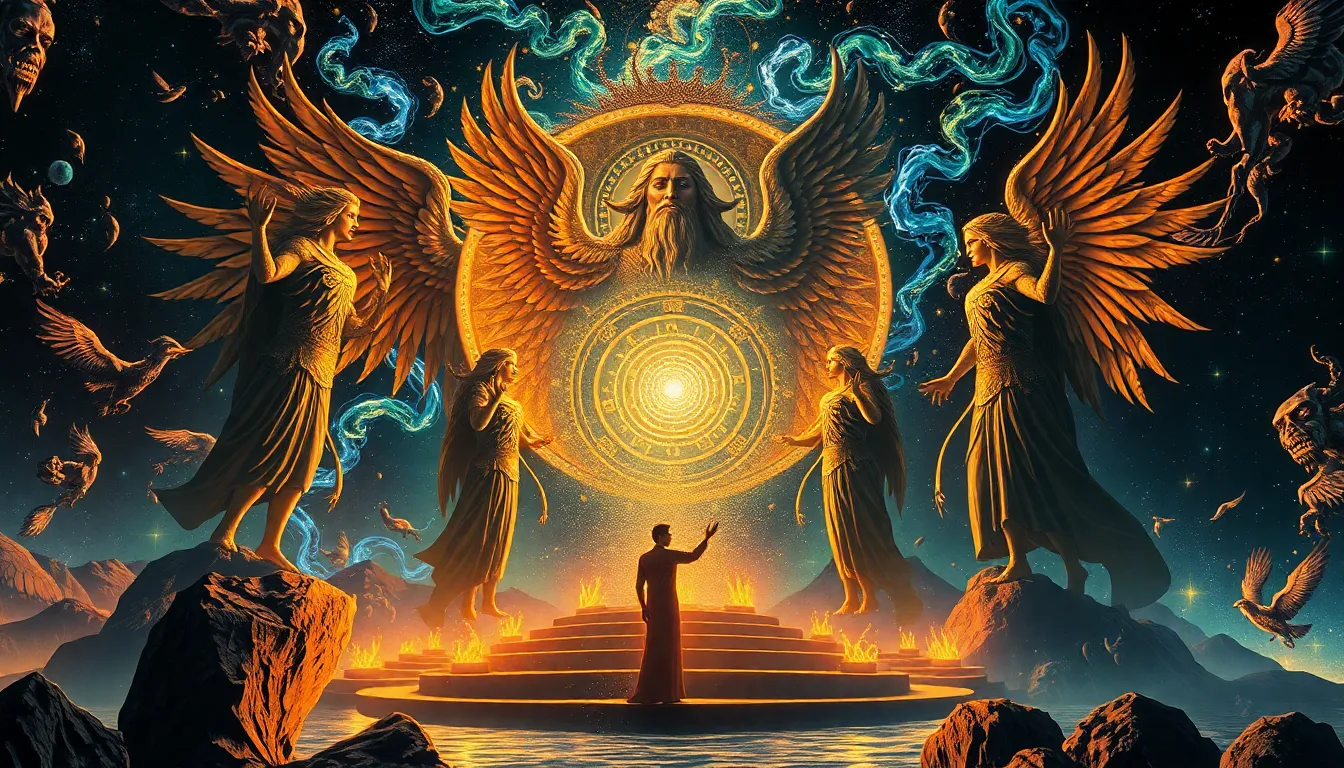The Baku: A Case Study in Cross-Cultural Mythological Exchange
I. Introduction
The Baku is a fascinating creature rooted in Japanese mythology, often depicted as a tapir-like being that is said to consume dreams and nightmares. Its significance extends beyond folklore, representing deeper cultural meanings and the interconnectedness of human experience across various societies.
Cross-cultural mythological exchange refers to the way myths and legends evolve and adapt as they transition from one culture to another, often taking on new characteristics and significance. This article aims to explore the Baku’s journey through different cultures, its evolving interpretations, and the mechanisms that facilitate such exchanges.
The purpose of this article is to provide a comprehensive understanding of the Baku, its historical context, and its impact on both Japanese culture and other societies. We will explore the Baku’s origins, its role in contemporary culture, and its relevance in fostering cross-cultural connections.
II. Historical Background of the Baku
A. Origins of the Baku in Japanese Folklore
The Baku first emerged in Japanese folklore during the Heian period (794-1185). It is believed to have been derived from Chinese mythology, where a similar creature, the “Bixie,” was associated with the protection of the emperor and the warding off of evil spirits.
B. Evolution of the Baku Concept Across Different Cultures
As the concept of the Baku traveled through Asia, it evolved, absorbing characteristics from various cultures. In Japan, it became known as a dream-eater, while in China, its role morphed to include elements of protection and auspiciousness.
C. Historical Significance and Symbolic Meanings
Historically, the Baku symbolizes the human desire to confront and eliminate fears and nightmares. It embodies the hope for safety and peace during sleep, representing a bridge between the conscious and subconscious realms.
III. Baku in Japanese Culture
A. Description of the Baku in Japanese Mythology
In Japanese mythology, the Baku is described as a creature with the body of a bear, the trunk of an elephant, the legs of a tiger, and the eyes of a rhinoceros. This unique combination of features makes it a distinctive figure in the pantheon of mythological beings.
B. Role of the Baku in Dreams and Protection
The Baku is traditionally invoked to protect individuals from nightmares. It is believed that if a person wakes from a bad dream, they can recite a prayer to the Baku, asking it to devour the remnants of their troubling thoughts and fears.
C. Artistic Representations and Cultural Significance in Japan
Artistic representations of the Baku can be found in various forms, including paintings, sculptures, and textiles. Its image is often used in talismans and amulets aimed at providing protection during sleep, showcasing its importance in Japanese culture.
IV. Influence of the Baku in Other Cultures
A. Adaptations and Interpretations in Chinese Mythology
In Chinese mythology, the Baku is known as the “Bixie” and is often associated with good fortune and the protection of the state. It is depicted as a guardian against evil spirits, illustrating how its role shifted from a dream-eater to a protector.
B. Presence in Southeast Asian Folklore
Southeast Asian cultures have also adopted the Baku concept, often incorporating it into their own mythological frameworks. In some regions, it is linked to the idea of spiritual cleansing and protection during sleep.
C. Comparison with Similar Mythological Creatures in Other Cultures
- Incubus and Succubus: These demon-like entities in Western mythology are often associated with nightmares and sleep disturbances.
- Churels: In South Asian folklore, these spirits are believed to terrorize individuals in their dreams.
- Dreamcatchers: Native American culture employs dreamcatchers to filter out bad dreams, resembling the protective role of the Baku.
V. Mechanisms of Mythological Exchange
A. Trade Routes and Cultural Interactions in Ancient Times
Trade routes, such as the Silk Road, facilitated the exchange of goods and ideas between cultures, allowing the Baku to travel and evolve. Merchants, travelers, and scholars played a vital role in disseminating mythological tales.
B. Impact of Globalization on Mythological Narratives
In today’s interconnected world, globalization has accelerated the exchange of mythological narratives. The Baku’s presence in popular culture, such as literature and film, highlights its adaptability and relevance in modern storytelling.
C. Role of Literature and Art in Disseminating the Baku Legend
Literature and art have served as critical vehicles for the exchange of mythological ideas. The Baku has appeared in various forms of media, from classical literature to contemporary anime, ensuring its continued presence in cultural discourse.
VI. Contemporary Interpretations of the Baku
A. Modern Adaptations in Literature, Film, and Pop Culture
In recent years, the Baku has been reimagined in various forms of media. From animated films to video games, the creature has captured the imagination of a new generation, often depicted as a whimsical guardian of dreams.
B. The Baku’s Influence on Contemporary Spirituality and Practices
The Baku has also found a place in contemporary spiritual practices, where individuals invoke its name for protection during sleep and to ward off nightmares, reflecting a resurgence in interest in mythological creatures.
C. The Resurgence of Interest in Mythological Creatures
As societies increasingly seek to reconnect with cultural heritage, the Baku stands as a symbol of the enduring power of myth. Its resurgence in popular culture reflects a broader trend of exploring and celebrating mythological beings across various cultures.
VII. Significance of Cross-Cultural Mythological Exchange
A. Understanding Cultural Identity Through Myth
Mythology plays a crucial role in shaping cultural identity. The Baku serves as a reminder of how shared narratives can foster a sense of belonging and connection among people.
B. The Role of Myth in Fostering Global Connections
Myths like the Baku highlight the universality of human experiences, such as fear and the quest for protection. This shared understanding can foster global connections and promote empathy among cultures.
C. Implications for Cultural Preservation and Appreciation
Cross-cultural mythological exchange encourages the preservation of cultural narratives. By appreciating the Baku and its adaptations, societies can honor their heritage while embracing the richness of global diversity.
VIII. Conclusion
In summary, the Baku represents a fascinating case study in cross-cultural mythological exchange. Its journey from Japanese folklore to a globally recognized figure illustrates the adaptability of myth and the interconnectedness of human experience.
The relevance of the Baku today lies not only in its artistic and cultural representations but also in its ability to resonate with contemporary audiences seeking protection and solace in an increasingly complex world.
Future research on mythological exchanges can further illuminate the ways in which myths evolve and adapt, providing insights into the human condition and the shared narratives that unite us all.



